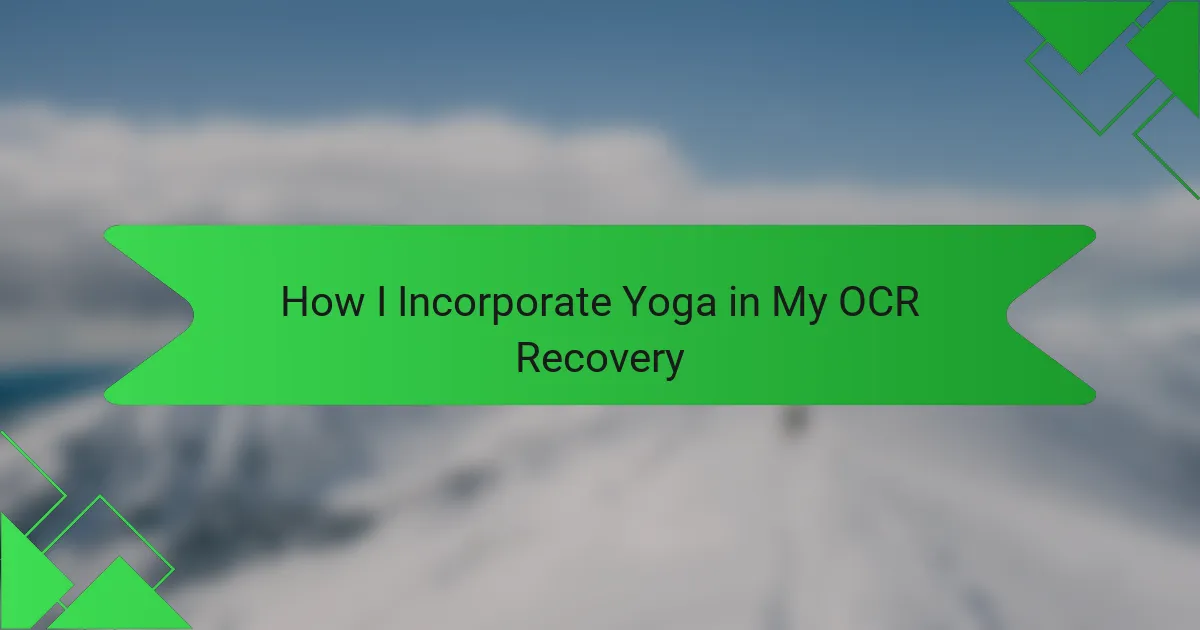Key takeaways
- Obstacle Course Racing (OCR) combines physical and mental challenges, emphasizing resilience and adaptability.
- Recovery techniques such as foam rolling, active recovery, yoga, and rest are crucial for maintaining performance and overall well-being in OCR.
- Yoga enhances flexibility, improves breathing control, and accelerates recovery, making it beneficial for OCR athletes.
- Establishing a consistent yoga practice integrated into training routines helps in recovery and mental clarity, bolstering performance for future races.

What Is Obstacle Course Racing
Obstacle Course Racing, or OCR, isn’t just running—it’s about pushing your limits through a series of challenging physical and mental obstacles. From climbing walls to muddy trenches, each race tests different skills, requiring strength, agility, and endurance. Have you ever felt the thrill of conquering an intimidating obstacle that once seemed impossible? That’s the heart of OCR for me.
What I find compelling about OCR is how unpredictable it is. No two courses are the same, and you never quite know what’s around the next bend. It’s a bit like life—you can train hard, prepare yourself, but you also need adaptability and grit to get through. I remember my first race feeling both exhilarated and exhausted, but completely hooked on the experience.
More than just a sport, OCR challenges your mindset as much as your body. It’s about resilience, teamwork, and celebrating every small victory, whether it’s scaling a rope or simply finishing the race. Have you noticed how accomplishing one obstacle can boost your confidence for the next one? That feeling of progress keeps me coming back for more.
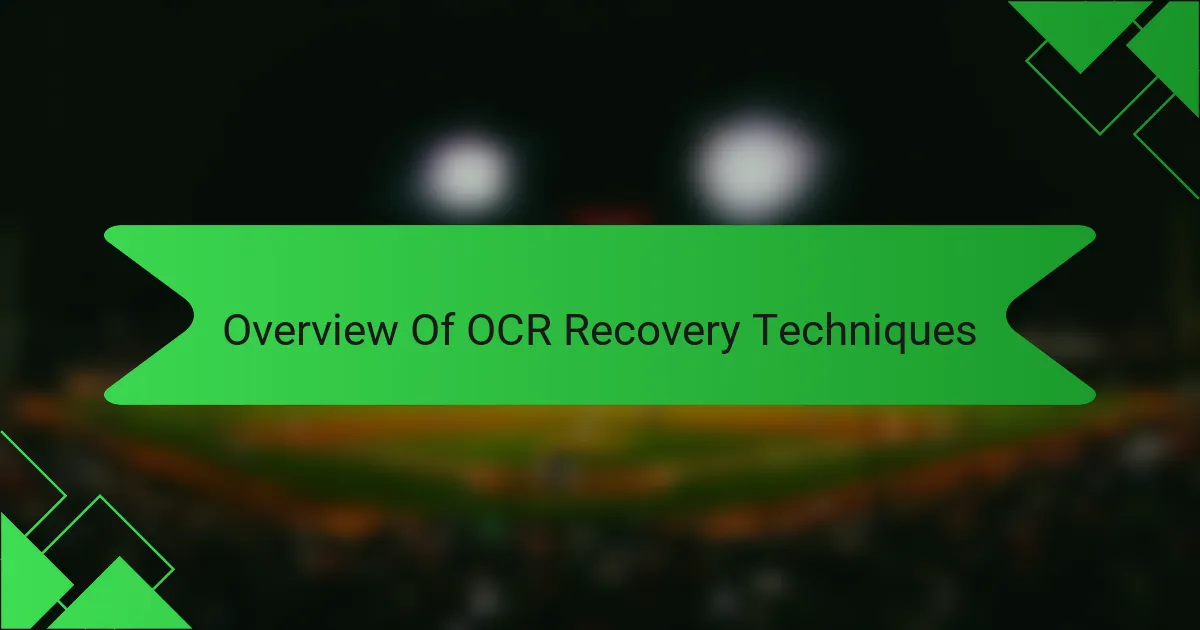
Overview Of OCR Recovery Techniques
Recovery in obstacle course racing (OCR) is essential for maintaining peak performance and avoiding injuries. From muscle repair through foam rolling to active recovery techniques like swimming, each method offers unique benefits. I’ve found that combining multiple approaches keeps me balanced and ready for my next race.
While traditional recovery tools work well, I’ve noticed yoga adds a deeper layer of physical and mental healing that many overlook. It helps me reset not just my muscles but my mindset after grueling training sessions.
| Recovery Technique | Key Benefits |
|---|---|
| Foam Rolling | Releases muscle tension, improves blood flow |
| Active Recovery (e.g., swimming) | Enhances circulation, reduces stiffness |
| Yoga | Improves flexibility, reduces stress, aids mental focus |
| Rest and Sleep | Supports overall healing, vital for endurance |

Benefits Of Yoga For OCR Athletes
Benefits Of Yoga For OCR Athletes
Yoga provides OCR athletes with improved flexibility and joint mobility, which I’ve found essential for navigating obstacles without injury. Its emphasis on controlled breathing helps me manage race-day anxiety and sustain energy. Plus, regular practice encourages quicker recovery by reducing muscle soreness, a game-changer in my training routine.
| Benefit | Impact on OCR Athletes |
|---|---|
| Improved Flexibility | Enhances range of motion to tackle obstacles smoothly and reduce injury risk. |
| Breath Control | Helps manage stress and maintain steady energy levels during races. |
| Faster Recovery | Alleviates muscle soreness, enabling more consistent and effective training sessions. |
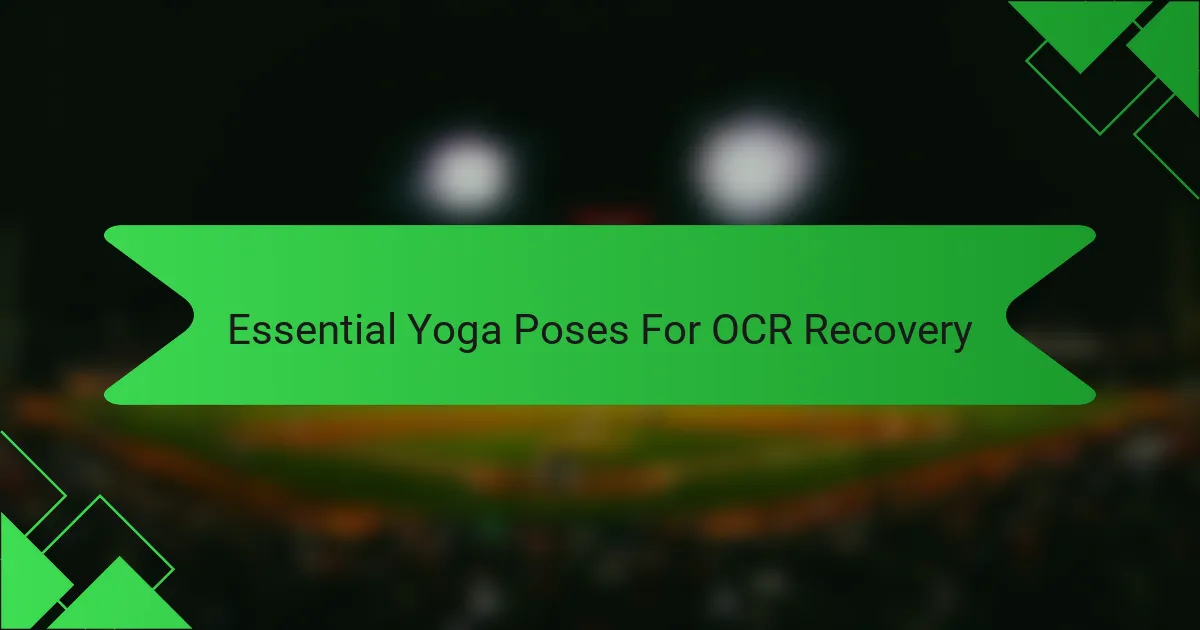
Essential Yoga Poses For OCR Recovery
One of my go-to poses after a tough OCR session is the Downward Dog. It stretches my hamstrings and calves, which get seriously tight from all the running and jumping. Have you ever felt that deep, satisfying stretch that almost melts away fatigue? That’s exactly what this pose does for me.
I also swear by Pigeon Pose for loosening up my hips—the unsung heroes in obstacle course racing. Tight hips can really limit your agility, and after a race, I can feel the difference this pose makes in my mobility and comfort. It’s like giving your body a second wind, just by sitting still and breathing into the stretch.
Then there’s Child’s Pose, my mental reset button. It’s simple but powerful, allowing me to calm my mind while gently lengthening my spine. After pushing through grueling obstacles, taking a moment here helps me reclaim focus and peace, which are just as crucial for recovery as the physical benefits. Don’t underestimate the power of stillness.
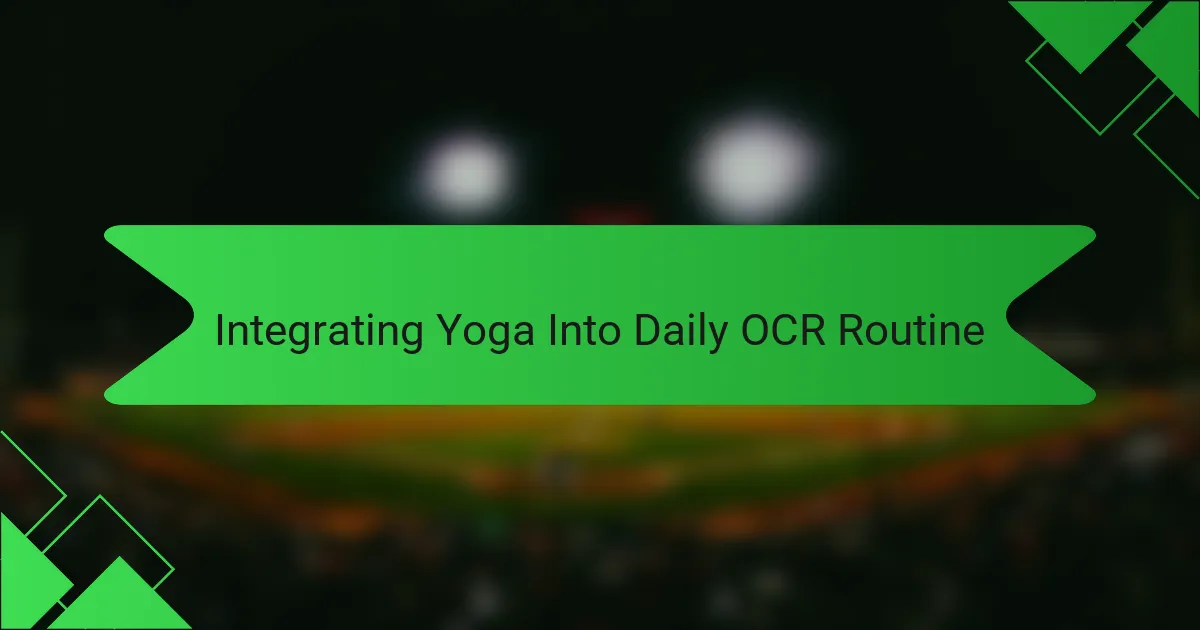
Integrating Yoga Into Daily OCR Routine
Incorporating yoga into my daily OCR routine has been a game-changer for my recovery process. After intense training sessions, I find that a few gentle yoga poses help relieve muscle tightness and restore my body’s balance. It’s not just about physical recovery; practicing yoga brings me a sense of calm and mental clarity that fuels my motivation for the next race.
Over time, I’ve created a simple flow that targets key areas affected by OCR—like hips, hamstrings, and shoulders. Here’s a snapshot of what my daily yoga routine includes:
- Downward Dog: to stretch hamstrings and calves while opening the shoulders
- Pigeon Pose: to release deep tension in the hips
- Cat-Cow Stretches: to increase spinal flexibility and relieve back stiffness
- Child’s Pose: for gentle rest and mental relaxation
- Cobra Pose: to strengthen the lower back and improve posture
This practice has become a vital part of how I bounce back, blending mindfulness with muscle care in a way that feels both restorative and empowering.
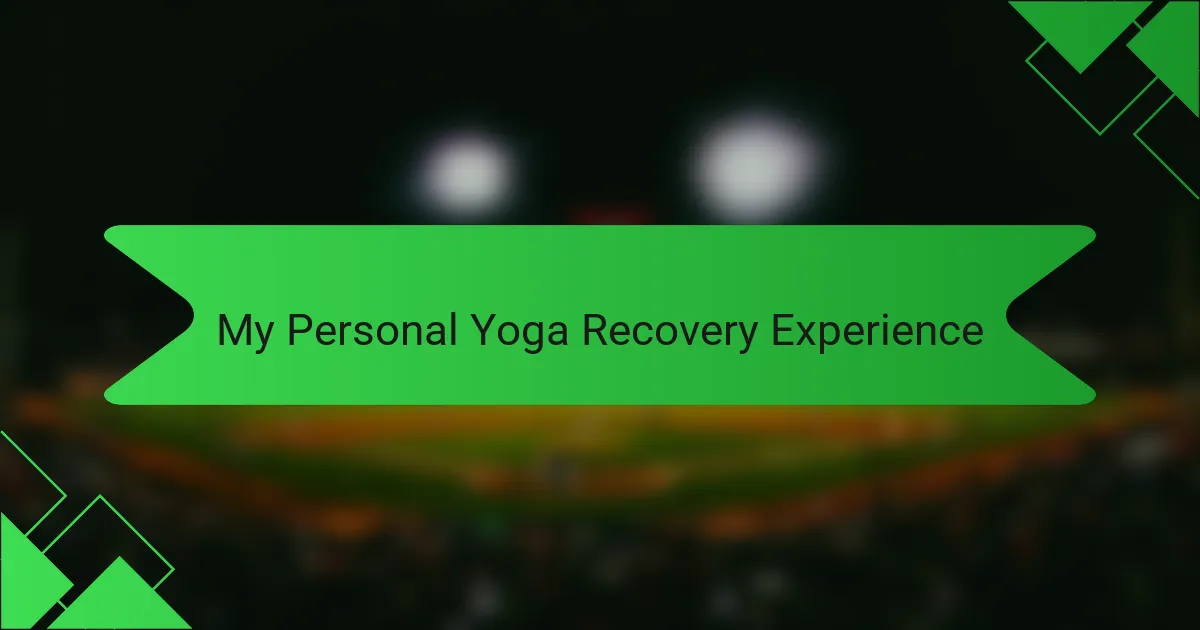
My Personal Yoga Recovery Experience
After pounding the trails and conquering each obstacle, my body often feels a mix of exhilaration and deep fatigue. Integrating yoga into my OCR recovery has been transformative—I recall one intense race weekend when tight hips and sore shoulders almost kept me from training further. Through gentle stretches and mindful breathing, yoga helped me release not just physical tension but mental stress as well, turning recovery into a time of reflection and renewal.
I’ve found that specific yoga poses target the muscle groups most taxed by obstacle course racing. The slow, deliberate movements contrast nicely with the explosive power needed during a race, allowing my body to heal without losing flexibility or core strength. This balance keeps me injury-free and ready for whatever the next course throws my way.
- Focus on hip openers like Pigeon Pose to relieve tightness from running and climbing
- Incorporate Child’s Pose for gentle spinal relief after carrying heavy loads
- Use Downward Dog to stretch calves, hamstrings, and shoulders while improving circulation
- Practice Cat-Cow stretches to enhance spinal mobility and ease back stiffness
- End sessions with deep breathing exercises to promote relaxation and lower cortisol levels
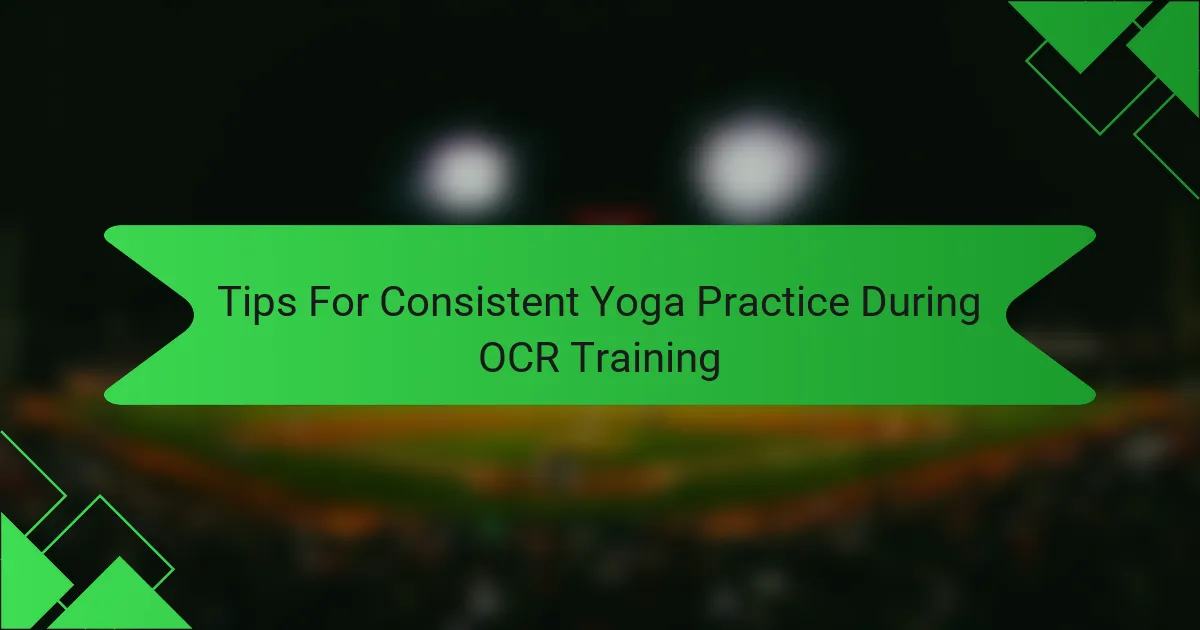
Tips For Consistent Yoga Practice During OCR Training
Consistency in yoga during OCR training isn’t always easy—I’ve struggled with fitting it in amidst long runs and strength workouts. What helped me was setting a realistic goal, like just 10 minutes a day, focusing on key poses that directly aid my recovery. Have you ever noticed how even a short stretch can completely change how your body feels after a hard session?
Another tip I’ve learned is treating yoga as non-negotiable recovery time rather than optional flexibility work. Scheduling it like an appointment keeps me accountable, especially on days when motivation dips. Plus, mixing up the routine keeps things fresh—some days it’s more restorative, other days a bit more dynamic, adjusting to how my body feels.
Lastly, buddying up makes a difference. Sharing a yoga session with a fellow OCR athlete turns it into a supportive ritual rather than a chore. Have you tried practicing yoga with a friend? The shared energy and mutual encouragement keep me consistent and make recovery feel less like a solo task.
